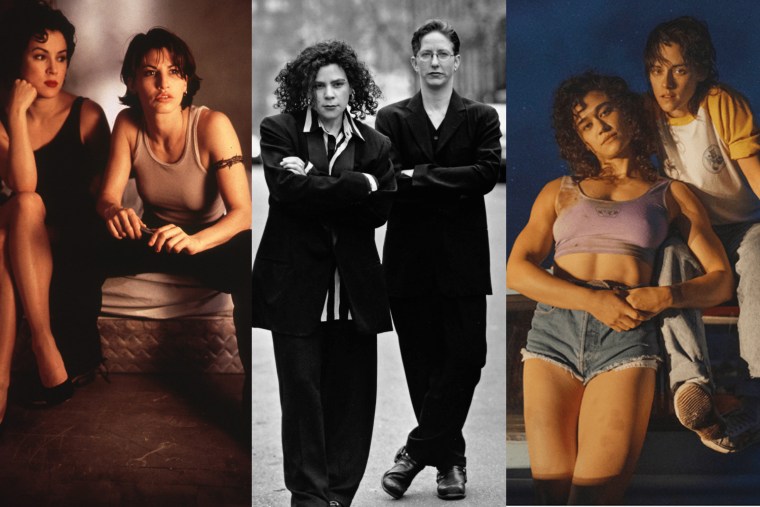Since the dawn of Hollywood, movies have played a prominent role in both the invisibility and visibility of lesbians. Even though the blatantly homophobic Hays Code era ended in the 1960s, it’s only been in the last 30 years that queer women have been able to be out in front of and behind the camera, quite literally showing the diversity of a community that encompasses a wide range of identities within one shared culture.
“There are little waves of momentum,” said filmmaker and historian Jenni Olson. “Being able to point to something that succeeds helps other filmmakers.”
In 2024, the fruits of lesbian labor can be seen in wide-release films like “Bottoms,” “Drive-Away Dolls” and, most recently, “Love Lies Bleeding,” but they’re just the latest in a series of moments Sapphic cinephiles are gifted once every few years. These moments started with the advent of openly lesbian films in the 1980s, with dyke bars and film festivals playing the polyamorous vampire flick “The Hunger,” the bisexual athletic drama “Personal Best” and Donna Deitch’s adaptation of Jane Rule’s 1950s divorce ranch romance “Desert Hearts” practically on a loop.
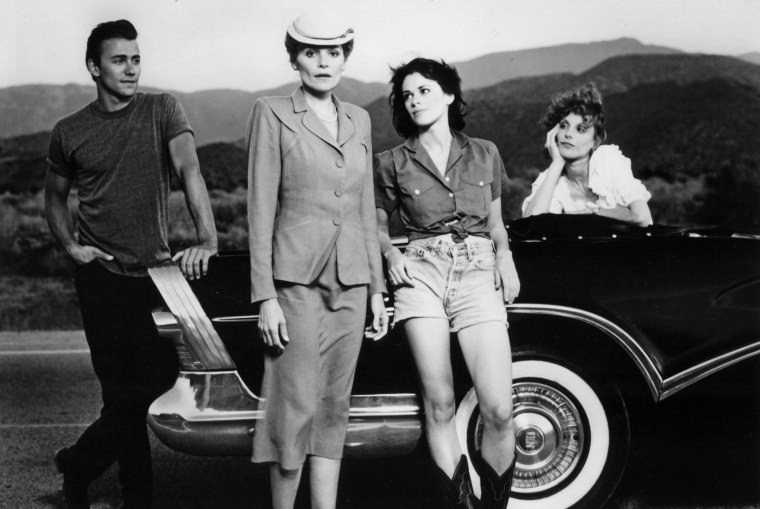
“There genuinely were not enough lesbian films,” said Olson, a former programming director at San Francisco’s Frameline LGBTQ film festival. She said lesbians got tired of being relegated to smaller theaters to watch the same films year after year, and recalled a “lesbian riot” erupting at the festival.
“The legend is that they stormed the projection booth,” Olson said, noting it led to a changing moment.
Seeking to help women and other marginalized filmmakers see their projects across the finish line, Frameline’s board brought in women like Olson to work with their gay male counterparts and launched a Completion Fund in 1990. The early ’90s was already a crucial turning point with the advent of “new queer cinema,” a movement celebrated by film critic B. Ruby Rich to refer to the success of emerging queer filmmakers like Todd Haynes, Isaac Julien, Tom Kalin and Gregg Araki, who were winning awards and distribution deals for their explicitly gay work.
Things didn’t change for queer women, however, until a scrappy little film out of Chicago called “Go Fish” made a splash at Sundance in 1994.
“It’s so great to look back and appreciate how significant ‘Go Fish’ really was,” Olson said. “It was the first widely released lesbian film that told the everyday lives of a young, racially diverse, politically engaged, contemporary lesbian friend group. We could watch it and say, ‘Oh, this is something that represents me. That looks like me. That looks like my life,’ in a way that hadn’t happened before.”
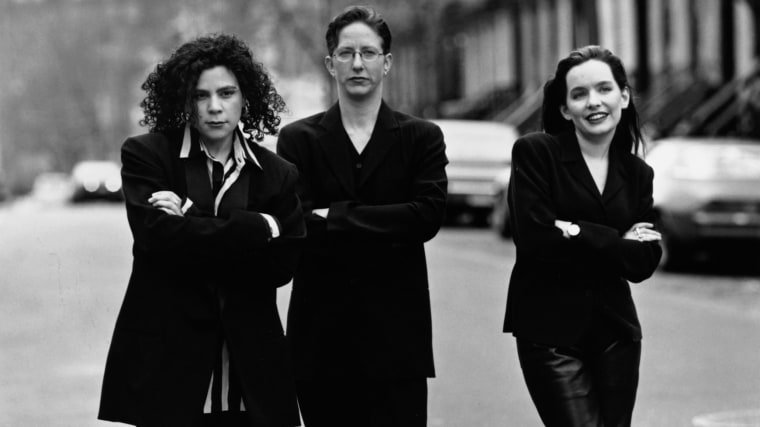
Screenwriter and actor Guinevere Turner said by the early 1990s, she had watched practically every lesbian film and never saw herself or her friends represented in the limited portrayals available at the time.
“Lesbian films were starting to get a reputation for being kind of depressing and moody and low production quality,” Turner told NBC News. “At that point, I think the two words ‘lesbian film’ just sounded dreary to the world, like it was going to be some somber lonely lady on a fainting couch, which a lot of them were.”
Turner and her eventual collaborator, Rose Troche, met in Chicago in the early ’90s while both were part of ACT UP, a grassroots group working to end the AIDS crisis. The duo eventually decided to create the type of film they wanted to see.
“I had never even read a script, much less written one,” said Turner, who would go on to write the screenplay for and star in “Go Fish,” which would catapult her career and Troche’s.
Shot on 16 mm film in black and white, “Go Fish,” about finding love in Chicago’s lesbian community, was filmed over several years with nonactors pulled from diners and dance clubs to make up the community Turner and Troche, the film’s co-screenwriter and director, were part of and knew existed elsewhere.
Related stories:
- Lesbian cinema emerges from the shadows at NYC’s Sapph-o-Rama film event
- Kristen Stewart and her 'Love Lies Bleeding' co-star on bringing lesbian sex to the cinema
- 'Bottoms' reinvents the teen sex comedy with a fight club and a lesbian twist
- Lesbian bars, broken hearts and dildos: Beanie Feldstein on the wild ride of ‘Drive-Away Dolls’
They secured finishing funds from Frameline and a boost from Killer Films’ Christine Vachon, who connected them with producer John Pierson, who already had hits like Spike Lee’s 1986 film “She’s Gotta Have It” under his belt. Pierson’s signoff ensured that “Go Fish” had the unlikely but heartening distinction of becoming the first film to ink a major distribution deal at the Sundance Film Festival in 1994, signing with The Samuel Goldwyn Co. to the tune of $450,000.
“It was very exciting to have something that was so uncompromising and from inside the community,” Rich said.
“Some of it is just right place, right time,” Turner said of the film’s success. “When independent cinema was really starting to be an exciting thing, it was like the 25th anniversary of Stonewall, and we hit a moment where k.d. lang was on the cover of Vanity Fair getting shaved by Cindy Crawford.”
Canadian filmmaker Patricia Rozema — whose third film, the lesbian romance “When Night Is Falling,” was released one year after “Go Fish” hit theaters — said she was impressed with how “Go Fish” was not centered on a coming-out experience, as most previous lesbian films had been.
“I really loved how it was just not, ‘She’s coming out! Will she? Won’t she? Can she? Oh, but where are the boys?’” Rozema said. “It’s just a bunch of women living their lives and being who they are.”
Shortly after its Sundance premiere, “Go Fish” opened in theaters nationwide just in time for Pride Month in June 1994, with Turner and Troche receiving favorable press in The New Yorker and Vanity Fair, and traveling around the world in support of the film.
They also found camaraderie and healthy competition with other aspiring lesbian filmmakers at the time, several of whom went on to write, direct and produce their own queer films. These filmmakers include Maria Maggenti (1995’s “The Incredibly True Adventures of Two Girls in Love”), Cheryl Dunye (1996’s “The Watermelon Woman”), Lisa Cholodenko (1998’s “High Art”), Kimberly Peirce (1999’s “Boys Don’t Cry”), Jamie Babbit (1999’s “But I’m a Cheerleader”) and Angela Robinson, whose Sapphic spy film “D.E.B.S.” was also a sensation at Sundance as a short before being turned into a feature for release in 2004.

Robinson said “Go Fish” was “earth-shattering at the time,” leading to at least a decade of Hollywood taking a chance on lesbian filmmakers looking to make work with explicitly gay themes. Notably, after several lesbian films received R and NC-17 ratings, “D.E.B.S.” was the first lesbian film to be rated PG-13.
“There was a definite kind of energy and soup around that time,” Robinson said, “and it felt really political to even get your movie made. You really felt like part of the movement was also seen if you could kind of crash into Hollywood and get your movie all the way through all the barriers of the time.”
One of those barriers included casting, which was a struggle when even mini-majors and independent studios were looking for Hollywood stars to be attached to any given project. For “Go Fish,” Turner and Troche pulled in friends and women off the street, but for features that required professionals, there were very few lesbian actors out in the ’90s, and if straight actors didn’t pass on the projects themselves, their management or publicists did on their behalf with concerns about career repercussions.
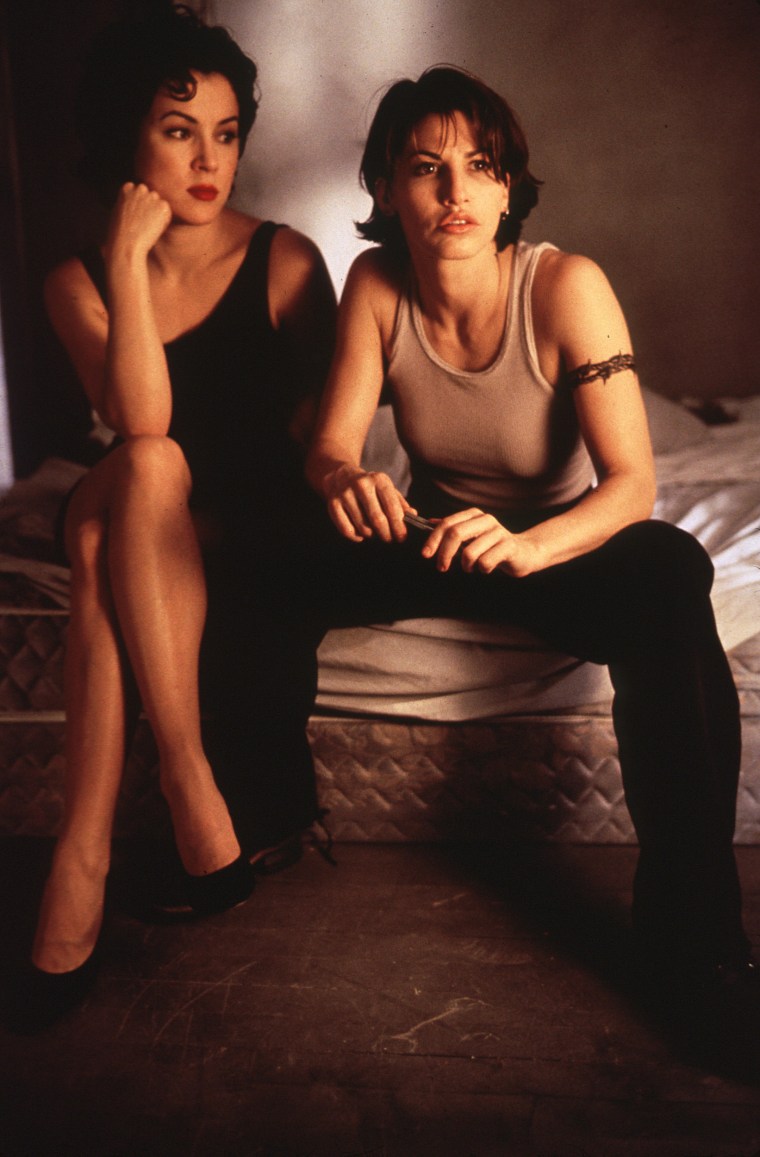
When casting the leads for their 1996 debut “Bound,” Lilly and Lana Wachowski saw several established actors pass despite the fleshed-out characters of lovers Corky and Violet. Those roles eventually went to Gina Gershon and Jennifer Tilly, who would eventually become stars due, in part, to their undeniable chemistry in the smoldering neo-noir, opening a door for actors (straight and otherwise) to see the potential accolades and attention possible for playing a lesbian part.
“It actually speaks a lot to Jennifer and Gina’s courage to take on these two roles that a lot of women passed on,” Lilly Wachowski said. “But Gina and Jennifer certainly saw that the script had a lot going for it and the way that we would talk about it because we were extremely interested in the culture.”
Like “Go Fish,” “Bound” also employed real queer women to be a part of the project (particularly the film’s bar scene), and queer sexpert Susie Bright both made a cameo in “Bound” and advised on the film’s Sapphic sex scenes, years before intimacy coordinators became a consideration. Two years after “Go Fish” premiered to a packed house at San Francisco’s Castro Theatre for Frameline, “Bound” played at the same theater to a similarly full house of lesbians and other queers who were shocked to see the leading ladies win in the end.
“We wanted them to have this heroic moment,” Wachowski said of Violet and Corky, the leads in “Bound,” adding that she was “happy and proud to have been able to give” queer audiences “this thing that they had never seen before.”
Olson recalled Troche sharing a similar sentiment at the 1994 premiere of “Go Fish” at the Castro Theatre: “I remember Rose saying to the 1,400 ecstatic lesbians, ‘I made this for you.’”
“Go Fish” and its contemporaries inspired a new era of lesbian filmmakers who brought an expansive view of what it means to be queer and a woman in different bodies and corners of the world, including Nisha Gantra’s “Chutney Popcorn” (1999), Alice Wu’s “Saving Face” (2004), Dee Rees’ “Pariah” (2011) and Desiree Akhavan’s “Appropriate Behavior” (2014). Around this time, Sapphic entertainment started to switch gears, with Troche, Turner, Robinson and several others turning to television when Showtime debuted “The L Word” in 2004. Running for six seasons, the Los Angeles-set lesbian series was another huge moment for lesbian visibility on screen, sharing several throughlines with “Go Fish,” including Turner’s recurring appearance on the show.
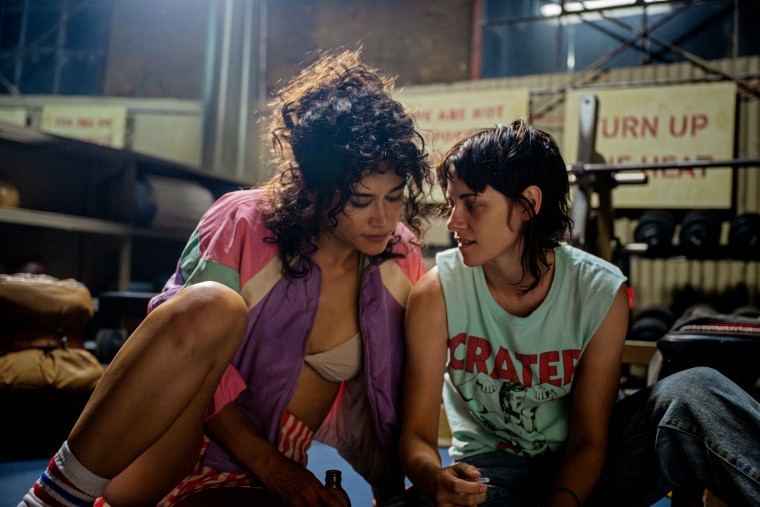
Despite the continued production of lesbian films during this period, they remained largely relegated to limited release. By the time “The L Word” went off the air in 2009, independent cinema had changed. Now, even though it’s easier than ever to make a movie, it’s never been more difficult to get it seen in a culture inundated with content. Without the Hollywood muscle of a producer like Elizabeth Banks (“Bottoms”) or a star like Kristen Stewart (“Love Lies Bleeding”) willing to bare all on the cover of Rolling Stone, LGBTQ film festivals are more necessary than ever for aspiring filmmakers whose work is not solely based on career aspirations, but on reflecting and reaching their community.
“It didn’t explode — it didn’t become bigger,” Rich said of lesbian cinema. “There is the sense in which the lesbian representation is always the bridesmaid, never the bride. We never really arrive, we’re always arriving.”
Three decades after “Go Fish” helped usher in an era of new lesbian cinema, the film is finding new audiences (and vice versa) with a new 4K print restoration that showed at Sundance this past January and at NewFest, New York City’s LGBTQ film festival, in April, with further screenings this summer. A retrospective of Rozema’s work played in both New York and Los Angeles this month, “D.E.B.S.” has just been announced as part of Cinespia’s Pride screening series in L.A. in June, and “Bound” has just been entered into The Criterion Collection.
Still, in three decades, there’s a lot left to be desired, with even proven creators like Turner, Wachowski and Robinson, all of whom have queer film and television projects in the ether that have yet to be greenlit, indicating that Hollywood might be stuck in yet another cyclical ebb for lesbian or otherwise queer content.
“There’s a similar elation to that idea of me sitting in that audience in the Castro and being humbled that I was able to do this for all these people,” Wachowski said. “I’m just not satisfied enough, so I’m simultaneously fighting as hard as I can to get these kinds of films made while railing against an industry that I think is responding to a lot of the queer backlash that is going on in the world. So I’m happy, but I’m still pissed off.”
For more from NBC Out, sign up for our weekly newsletter.
